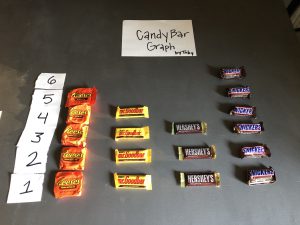
image taken from https://www.mathsisfun.com/data/mean-deviation.html
Mean Absolute Deviation (MAD) is how far, on average, all data values are from the middle.
To find the MAD, you can follow 3 easy steps:
- Find the mean of the values
- Find the distance of each value from that mean (subtract the mean from each value, ignore minus signs which is also the absolute value)
- Then find the mean of those distances
For this Math Mini Spark, you’ll be finding the MAD on a spreadsheet. Follow the steps below.
Step 1: Make a Copy of this Spreadsheet by clicking the link: https://docs.google.com/spreadsheets/d/1ndcgCZ1EeVcKausxtkmBkONVfCeilbQNE6ukdUCWYk8/copy
Step 2: Watch the video below and complete the steps shown in the video on your own spreadsheet.
Video: https://youtu.be/nGG2xq1COwE
NOTE: This mini-spark can be used as 1 spreadsheet lesson for the Spreadsheet Superstar Badge.


 image source:
image source: 

